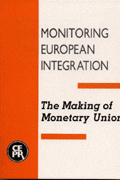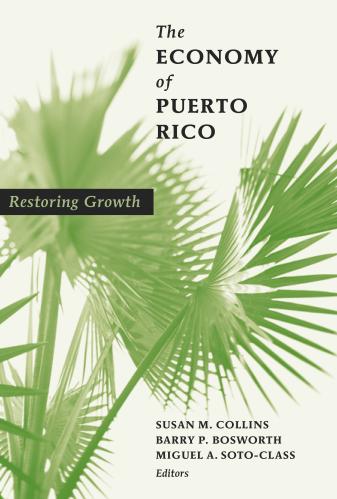What’s the latest thinking in fiscal and monetary policy? The Hutchins Roundup keeps you informed of the latest research, charts, and speeches. Want to receive the Hutchins Roundup as an email? Sign up here to get it in your inbox every Thursday.
The benefits of a child allowance vastly outweigh the costs
Based on previous work documenting the impact of cash transfers, Irwin Garfinkel of Columbia and co-authors estimate that the benefits of the 2021 expansion of the child tax credit on children’s health in adulthood and future earnings far outweigh the costs. They establish a comprehensive accounting of potential effects and standardize estimates from the literature to estimate the impact of a $1,000 increase in household income. Using microsimulation, they apply these estimates to calculate the cost and distribution of the benefits of creating a child allowance of $3,600 per child ages 0-5 and $3,000 per child ages 6-17, as in the 2021 expansion of the Child Tax Credit. They find that the total benefit for society of a child allowance is $982 billion per year and that it would only cost $97 billion per year. The biggest single benefit to children and society would come from a substantial increase in children’s health and longevity valued at $424 billion–more than four times the initial expenditure of $97 billion. Of the initial costs, 66% represent payments to families with incomes below $50,000, 24% to families with incomes between $50,000 to $100,000, and 10% to families with incomes above $100,000. The authors note that while this cost-benefit ratio is large, it is comparable to other investments in children such as pre-K programs, public education, and Medicaid. Moreover, they estimate that if all eligible families received the credit, 72 million children and 39 million parents would benefit.
Money market funds exhibit vulnerabilities internationally
Money market funds (MMFs) have faced similar challenges across different countries and governing arrangements, find Antoine Bouveret of the European Securities and Markets Authority, Antoine Martin of the New York Fed, and Patrick McCabe of the Federal Reserve Board. Examining the history of MMFs and associated crises since the 1970s, the authors say that vulnerabilities in MMFs primarily arise from two sources. The first is liquidity transformation — that their assets are less liquid than their liabilities — which can lead to first-mover advantages for investors who redeem their shares early in a crisis. The second is the potential to lose their perceived “moneyness,” since MMFs are intended to replicate features of bank deposits despite involving additional credit risk and fewer regulatory protections. Other characteristics of MMFs can exacerbate these vulnerabilities. For example, since a large fraction of MMF shares are held by institutional investors – who have greater short-term cash needs and attentiveness to risk – changes in perceptions can quickly generate stresses. Regulations that impose fees and gates for investor redemptions can increase first-mover advantages. The high degree of overlap in portfolios makes it difficult for MMFs to easily liquidate their assets during runs. Given the central role of MMFs in short-term funding markets and cross-border financing of banks, these vulnerabilities can transmit stresses throughout the global financial system.
Well-funded schools teach more ‘frontier’ knowledge
Barbara Biasi and Song Ma of Yale compare the text of 1.6 million higher education syllabi and 20 million academic articles to identify to what extent different syllabi incorporate “frontier” knowledge, defined as findings published within the last one to three years. They find that more selective, better funded, and more research-focused institutions teach more frontier knowledge in their courses, as do those with higher proportions of socioeconomically advantaged students. Additionally, research-active instructors and those who teach courses closer to their field of expertise include more frontier knowledge in their syllabi. Graduates of institutions teaching more frontier knowledge are also more likely to obtain a PhD, produce more patents, and have higher earnings. Although these findings do not prove causality, the authors conclude that further research on the dissemination of frontier knowledge could help explain how education propels innovation and how schools and instructors can affect students’ lives post-graduation.
Chart of the week: Two-year treasury yields have risen in last six months
 Quote of the week:
Quote of the week:
“I do expect inflation to begin to move down later this year and next, but it will take some time and inflation will remain above our goal of 2 percent. At some point, the current adjustments underway to increase the resilience of supply chains will help to ease the disruptions, and energy prices will stop increasing, even if they remain somewhat elevated compared to before Russia invaded Ukraine. Monetary policy action by the Fed cannot affect those sources of inflation, but it is an important contributor to the downward trajectory of inflation in my forecast because reducing the level of monetary policy accommodation will help to better align demand with constrained supply, thereby alleviating price pressures,” says Loretta Mester, President of the Federal Reserve Bank of Cleveland.
“Absent such action, with inflation already at very high levels and demand outstripping supply, there are rising risks that too-high inflation will become imbedded in the economy and persist. This can happen if consumers and businesses begin to doubt whether inflation will return to 2 percent over the medium to longer run and their rising expectations about future inflation become part of their pricing plans and wage demands. Consumers and businesses are paying a lot of attention to inflation, and their expectations of inflation over the short term, about one year out, have risen with actual inflation rates. So far, their expectations of inflation over the longer term have risen but remain at levels consistent with our longer-run goal of 2 percent inflation. That is a positive, but persistently high inflation readings impose rising risks that longer-term inflation expectations could become unanchored and this has implications for monetary policy. In an economy that is near our maximum employment and inflation goals, with longer-term inflation expectations that are well anchored, it is appropriate for monetary policy to look through supply shocks that temporarily raise inflation above target. But in the current environment, it seems too risky to allow the high inflation readings to persist and just wait until the supply-side factors putting upward pressure on prices abate. From a risk-management perspective, the Fed needs to take action to reduce excess demand and bring demand into better balance with constrained supply in order to better anchor inflation expectations and put inflation on a downward path to our longer-run goal of 2 percent.”
The Brookings Institution is financed through the support of a diverse array of foundations, corporations, governments, individuals, as well as an endowment. A list of donors can be found in our annual reports published online here. The findings, interpretations, and conclusions in this report are solely those of its author(s) and are not influenced by any donation.











Commentary
Hutchins Roundup: Child allowances, money market funds, and more
March 24, 2022